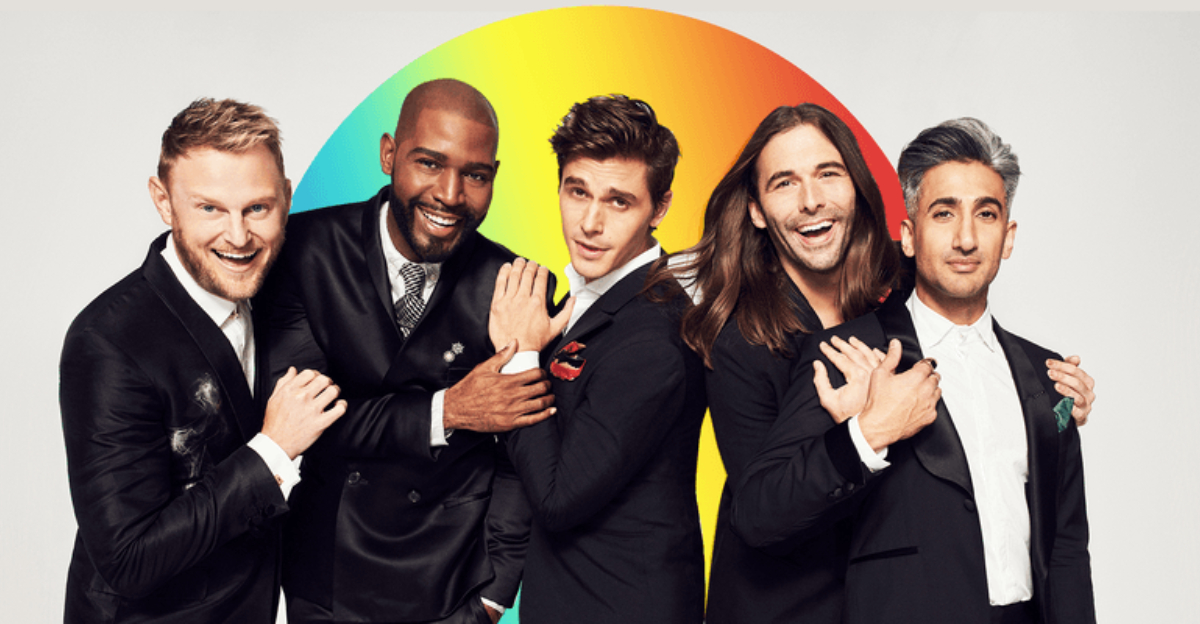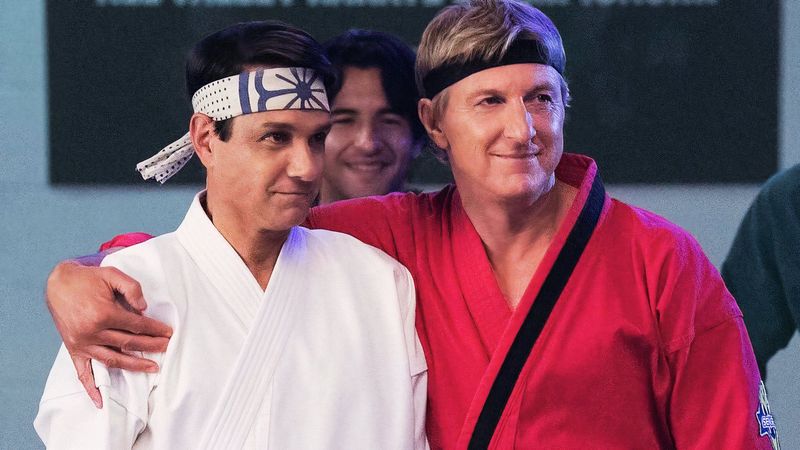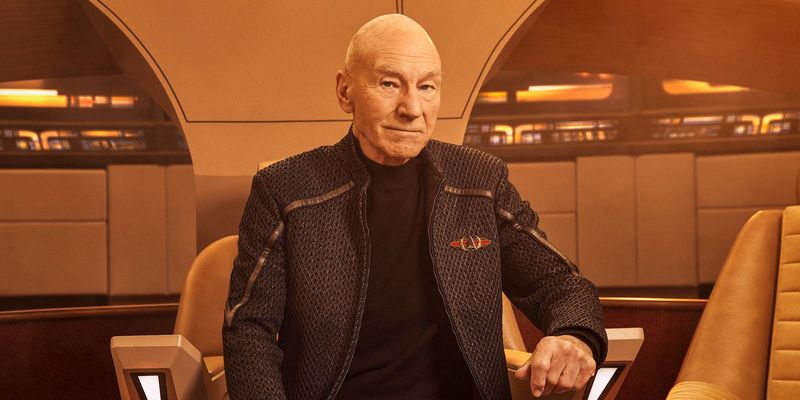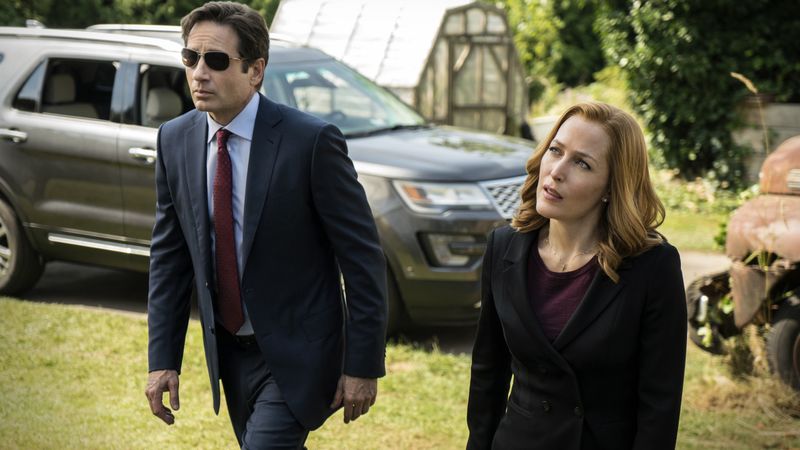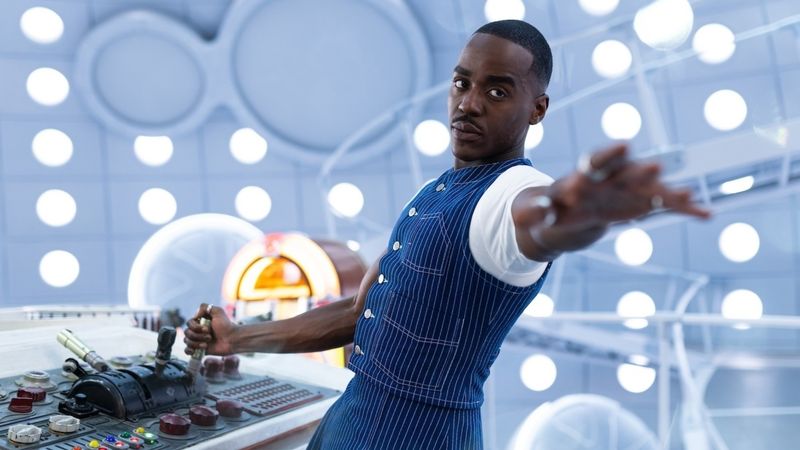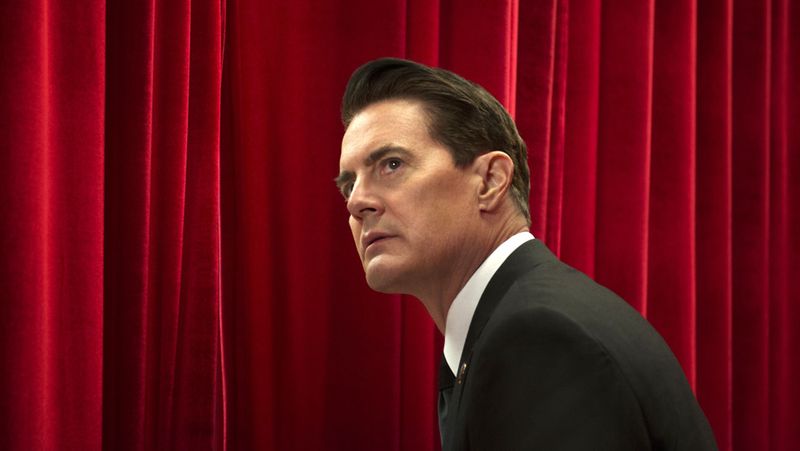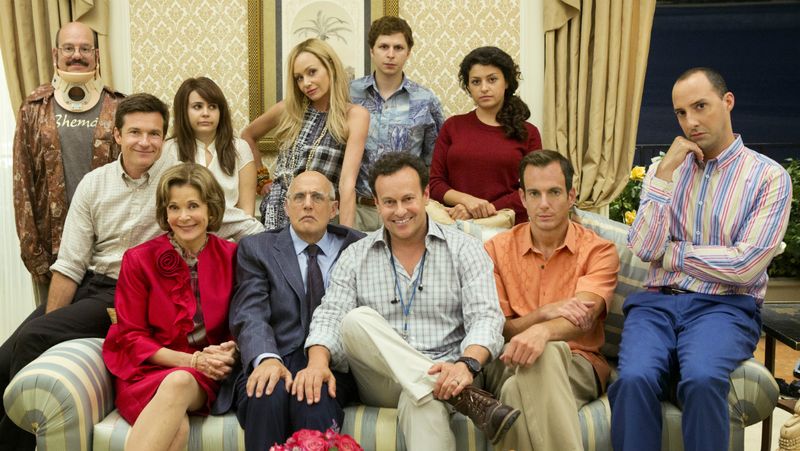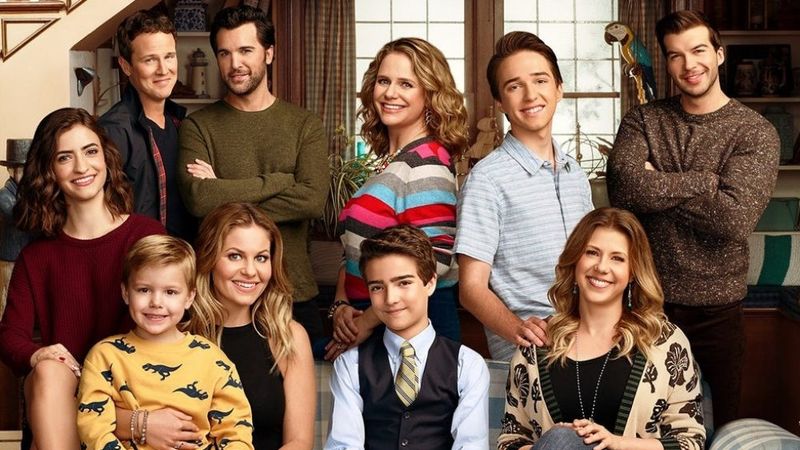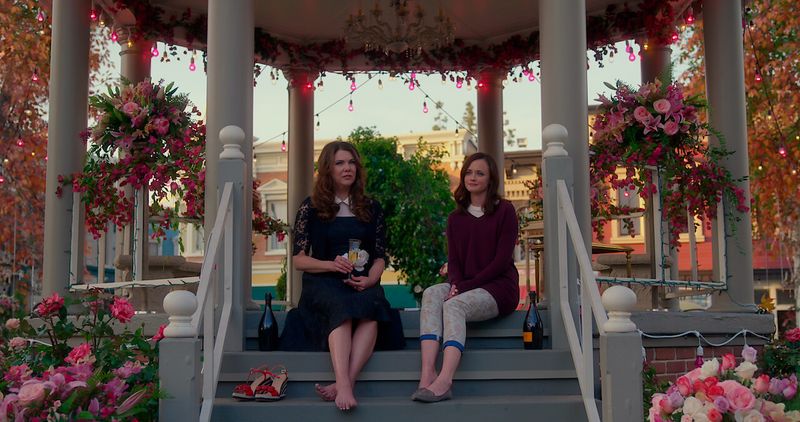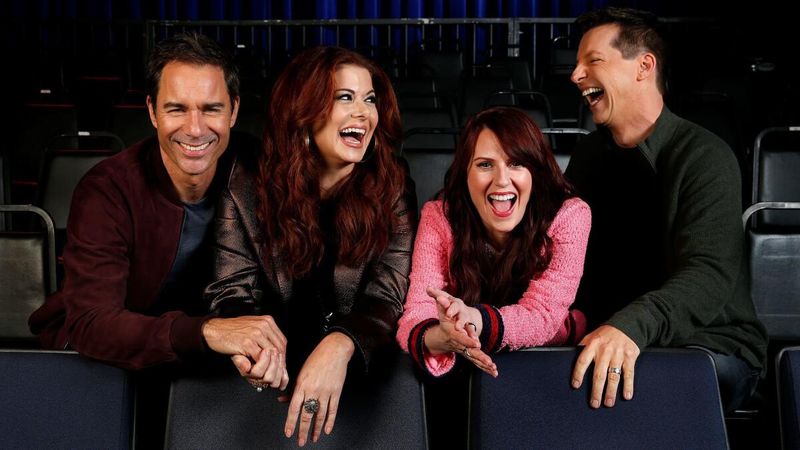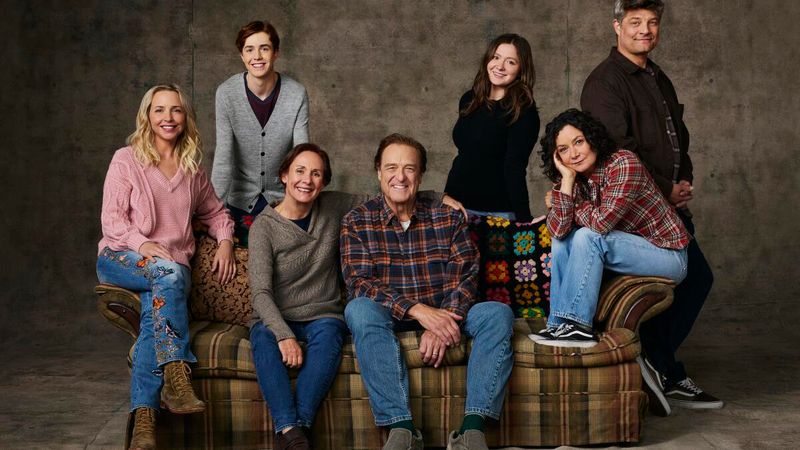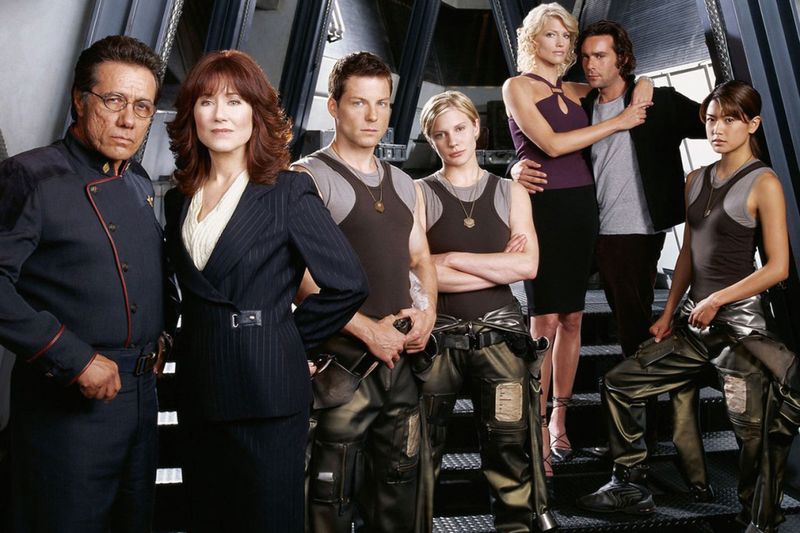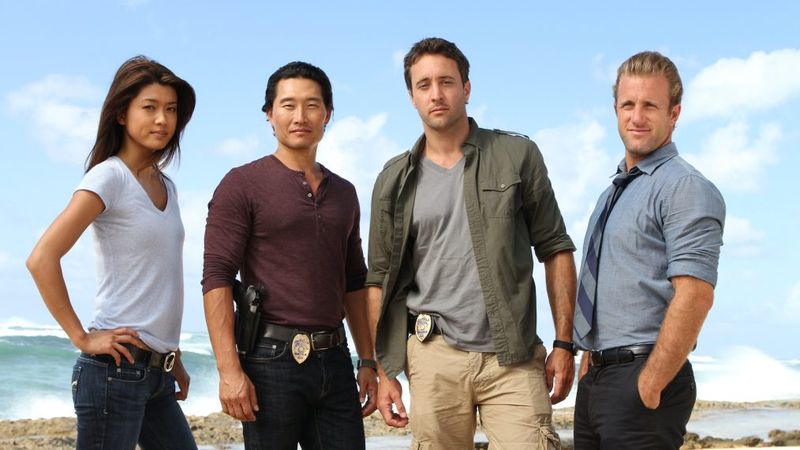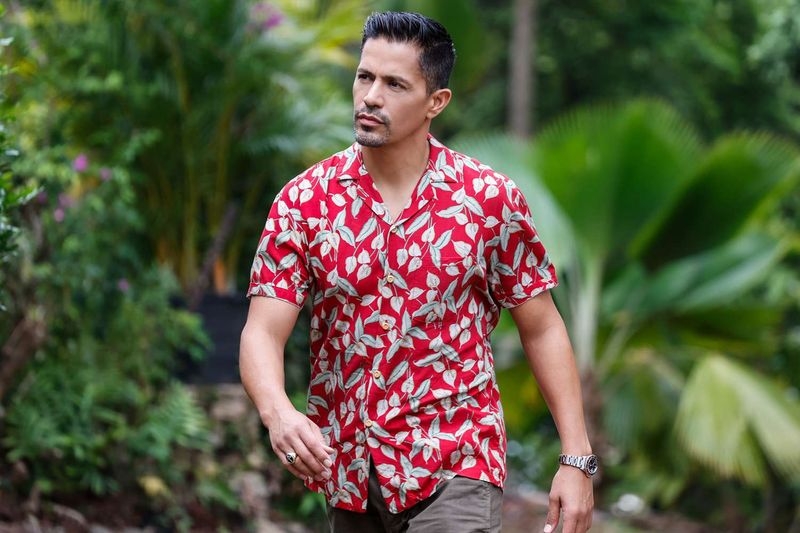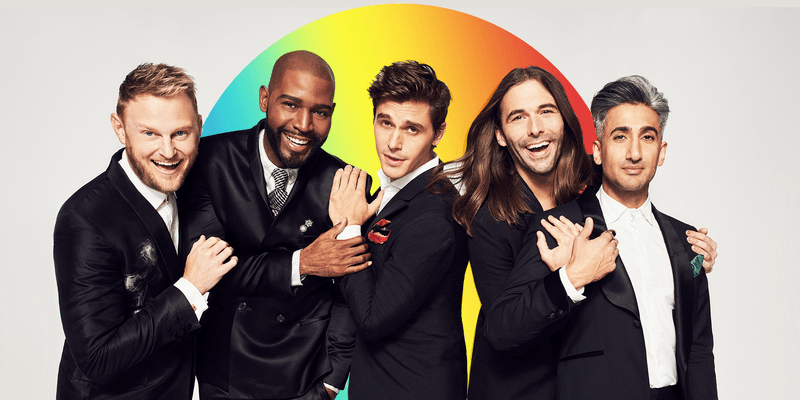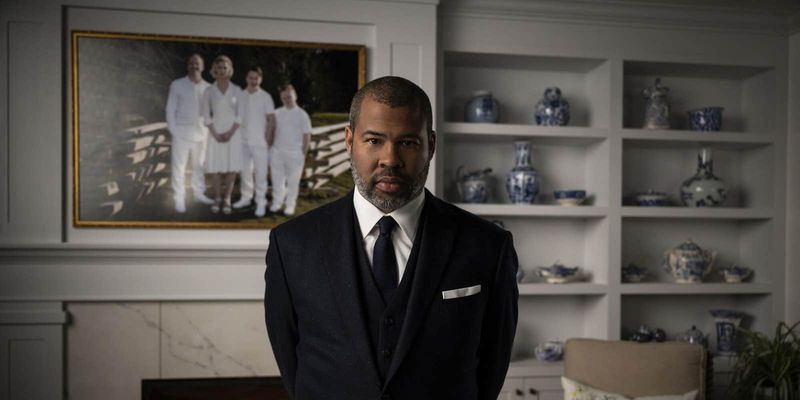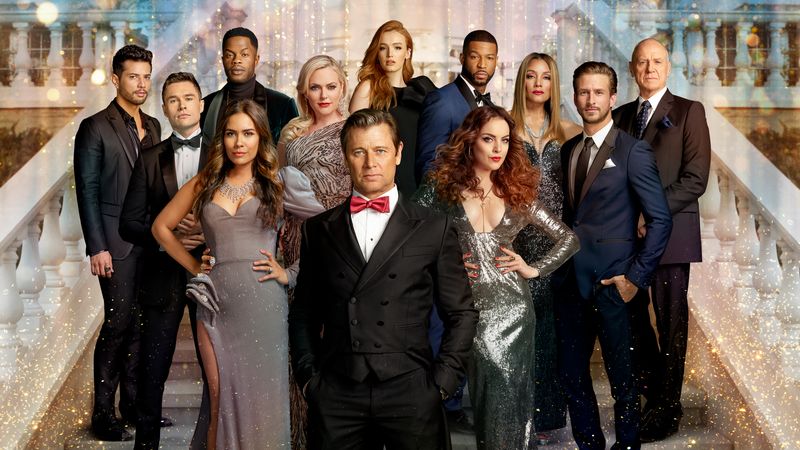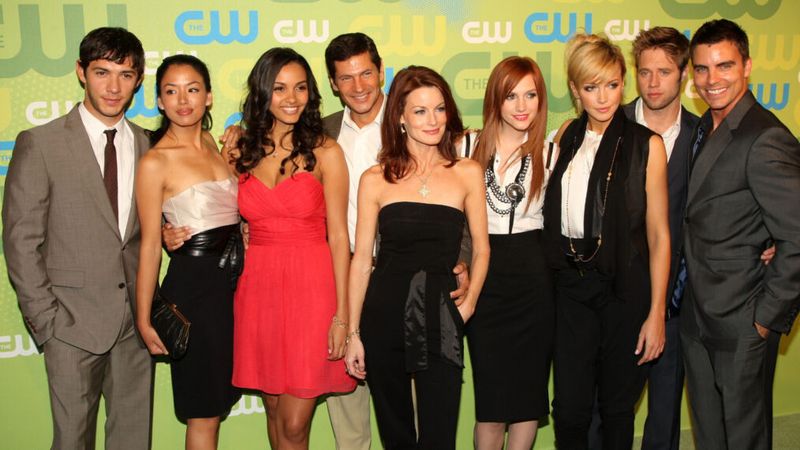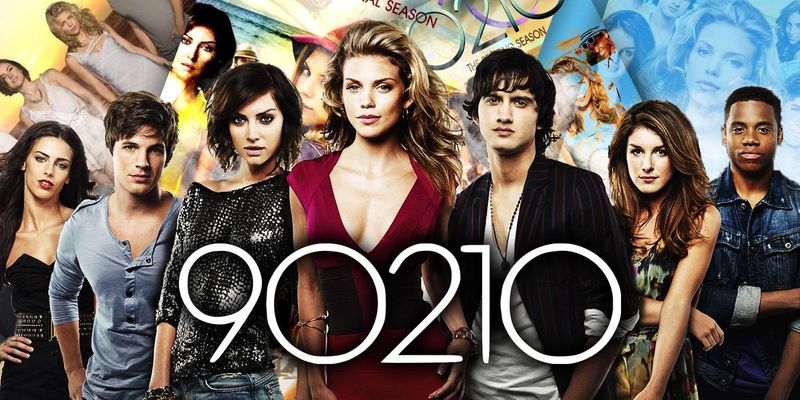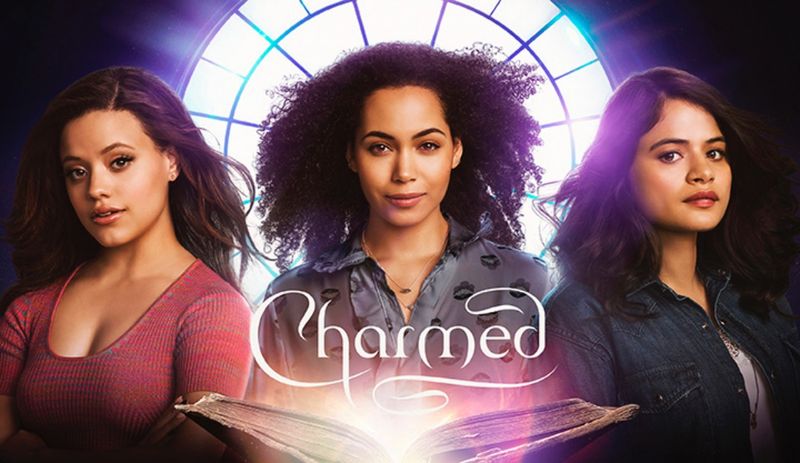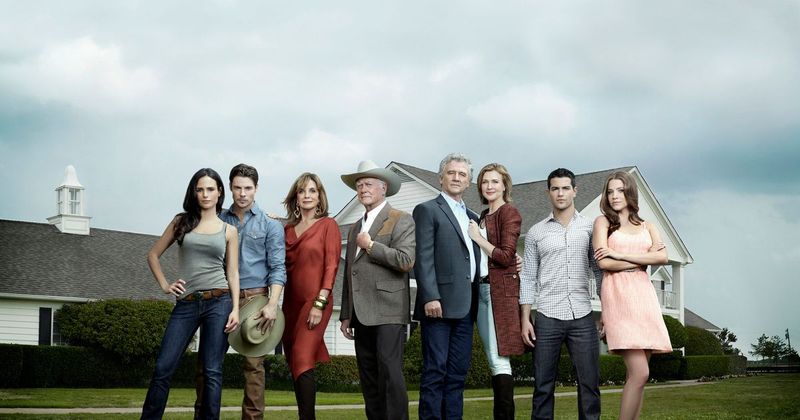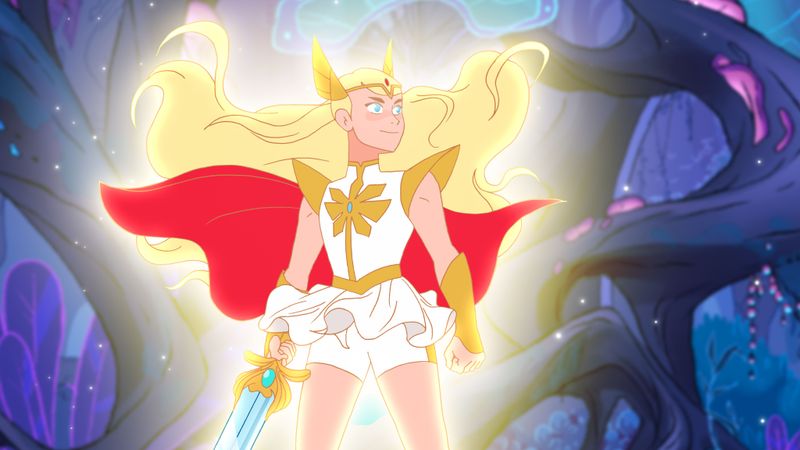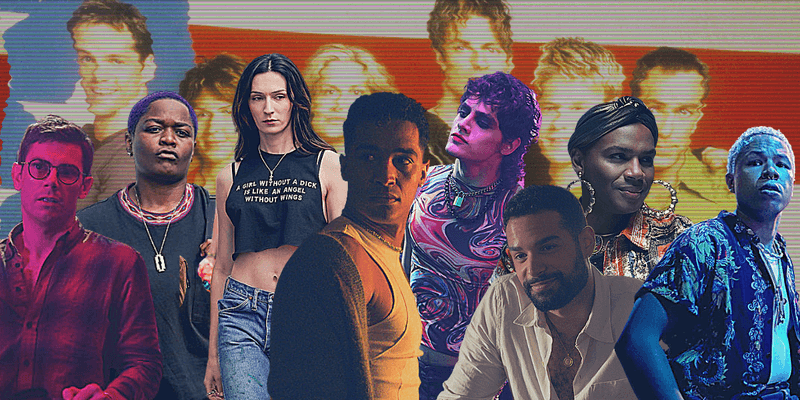Remember those TV shows you grew up loving? Many have made amazing comebacks in recent years with fresh stories and updated characters. These reboots bring back the magic we loved while adding new twists for today’s audiences. From martial arts revivals to sci-fi adventures, here are 25 TV reboots that are absolutely worth your streaming time.
1. Cobra Kai (1984 → 2018– ) – Netflix
Johnny Lawrence’s redemption journey transforms this sequel series into something far deeper than just ’80s nostalgia. The original Karate Kid rivalry evolves into a nuanced exploration of generational conflict and second chances.
Young fighters with their own demons bring fresh energy to the Valley’s dojo wars. The show brilliantly balances fan service with genuinely compelling character development for both veterans and newcomers.
Original stars William Zabka and Ralph Macchio shine with newfound depth, proving some rivalries age like fine wine. The series masterfully shifts viewer allegiances between dojos while delivering spectacular tournament sequences that honor the original films.
2. Star Trek: Discovery (1966 → 2017–2024) – Paramount+
Sonequa Martin-Green commands the screen as Michael Burnham in this boundary-pushing Trek incarnation. Unlike previous series, Discovery embraces season-long story arcs rather than episodic adventures, creating unprecedented emotional investment in its diverse crew.
Visual effects that would make even Roddenberry gasp breathe new life into space battles and alien worlds. The show boldly tackles complex themes of war, identity, and scientific discovery while maintaining the hopeful spirit that defines Trek.
Each season reinvents itself with jaw-dropping twists that send the crew across time and space. Discovery honors Trek’s progressive legacy with groundbreaking representation and thoughtful exploration of current social issues.
3. Star Trek: Picard (1966 → 2020–2023) – Paramount+
Patrick Stewart returns to his iconic role with gravitas and vulnerability rarely seen in science fiction. Set decades after The Next Generation, we find Jean-Luc wrestling with retirement, regret, and a final adventure that calls him back to the stars.
Familiar faces from the Enterprise crew appear throughout the three-season run, each carrying the weight of their shared history. The series blends nostalgic callbacks with bold new directions, exploring artificial intelligence and the lasting scars of past conflicts.
Slower-paced than classic Trek, Picard offers a meditation on aging heroes and unfinished business. The final season delivers an emotional reunion of the TNG crew that feels earned rather than forced.
4. The X-Files (1993 → 2016–2018) – Fox
Fourteen years after the original series ended, Mulder and Scully returned to investigate new conspiracies in a post-9/11 world. David Duchovny and Gillian Anderson stepped back into their roles with remarkable ease, their chemistry undiminished by time.
Modern paranoia about government surveillance provided fertile ground for fresh mysteries. The revival smartly balanced standalone monster-of-the-week episodes with a revised mythology that acknowledged our changed political landscape.
New supporting agents brought youthful energy while respecting the legacy characters. Though not every episode recaptured the original magic, when the revival hit its stride, it reminded fans why they wanted to believe in the first place.
5. Doctor Who (1963 → 2005– ) – BBC/Disney+
Russell T. Davies resurrected this British institution with a perfect balance of respect for the past and excitement for the future. The modern Doctor Who transformed from cult curiosity to global phenomenon with its mix of wonder, terror, and heartbreak.
Christopher Eccleston, David Tennant, and their successors each brought distinct personalities to the Time Lord while maintaining the character’s core values. Companions evolved from simple sidekicks to fully realized characters whose lives were forever changed by their TARDIS travels.
Budget limitations became creative strengths, with clever writing often outshining special effects. The revival’s emotional depth surprised viewers, proving science fiction could break hearts as effectively as it could showcase alien worlds.
6. Twin Peaks: The Return (1990 → 2017) – Showtime
Lynch and Frost’s 18-episode continuation defied all expectations, refusing to serve mere nostalgia. Instead of simply revisiting old characters, The Return expanded its universe into something more ambitious, terrifying, and profound than television had ever attempted.
Kyle MacLachlan delivered a tour-de-force performance playing multiple versions of Agent Cooper. The revival’s patience was remarkable – making viewers wait episodes for beloved characters to return to their familiar selves.
Musical performances at the Roadhouse punctuated each installment with dreamlike beauty. Episode 8 stands as perhaps the most experimental hour ever broadcast on American television, a surrealist origin story for the series’ evil that left viewers stunned.
7. Arrested Development (2003 → 2013–2019) – Netflix
Seven years after Fox canceled this cult comedy, Netflix assembled the Bluth family for new misadventures. The revival’s ambitious structure took advantage of streaming freedom, with interconnected episodes designed to reward multiple viewings.
Scheduling conflicts created production challenges, leading to creative workarounds that became part of the show’s meta-humor. Season 4’s experimental approach divided fans, but the more traditional fifth season recaptured more of the original’s ensemble dynamic.
Creator Mitchell Hurwitz packed every frame with visual gags and callback jokes for devoted viewers. Despite its imperfections, the revival provided closure for characters that had been abruptly abandoned, giving fans the banana stand encore they craved.
8. Fuller House (1987 → 2016–2020) – Netflix
The Tanner family home reopened its doors with DJ, Stephanie, and Kimmy raising their own children together. This gender-flipped premise mirrored the original series’ setup while allowing the new generation to face modern parenting challenges.
Jodie Sweetin and Andrea Barber stepped confidently from supporting roles to leads, bringing surprising depth to characters once played for laughs. Original cast members made regular appearances, creating a bridge between generations of fans.
Critics dismissed it as simplistic, but audiences embraced its wholesome humor and emotional sincerity. Fuller House knew exactly what it was – comfort food television that celebrated family bonds in an increasingly cynical TV landscape.
9. Gilmore Girls: A Year in the Life (2000 → 2016) – Netflix
Creator Amy Sherman-Palladino finally got to end her beloved series on her own terms with this seasonal miniseries. Set nearly a decade after the original series, we find Rory and Lorelai at personal crossroads, still talking a mile a minute but facing grown-up problems.
Stars Hollow remained frozen in time, providing a comforting backdrop to the characters’ evolution. The revival honored Edward Herrmann’s passing by making Richard’s death central to Emily’s transformative journey.
Those famous final four words – planned since the series’ inception – sparked endless debate among fans. While some storylines proved divisive, the revival captured the mother-daughter relationship’s complexity with all the warmth and wit that made the original series special.
10. Will & Grace (1998 → 2017–2020) – NBC/Hulu
The foursome’s chemistry remained electric in this revival that wisely pretended the original series finale never happened. Eric McCormack, Debra Messing, Sean Hayes and Megan Mullally slipped back into their roles effortlessly, their comic timing undiminished.
Political commentary became more prominent, reflecting how LGBTQ+ issues had evolved since the show’s groundbreaking first run. The revival acknowledged the characters’ aging while maintaining their essential personalities – Karen still drank excessively, Jack still chased fame, and Will and Grace still couldn’t quite grow up.
Guest stars both new and returning enhanced the revival without overshadowing the core four. The show found a satisfying conclusion that honored these characters’ decades-long journey together.
11. Roseanne → The Conners (1988 → 2018 → 2018– ) – ABC
The Conner family’s return proved working-class sitcoms still had relevant stories to tell in modern America. Following controversy surrounding Roseanne Barr, the show reinvented itself as “The Conners,” focusing on the family’s resilience after losing their matriarch.
John Goodman, Laurie Metcalf, and Sara Gilbert delivered performances that balanced humor with genuine pathos. The revival tackled opioid addiction, healthcare costs, and multigenerational households with honesty rarely seen in network comedies.
Storylines acknowledged how economic hardship shaped the family’s choices over decades. This transformation from star vehicle to true ensemble piece allowed supporting characters to develop depth they never had in the original series.
12. Battlestar Galactica (1978 → 2004–2009) – Syfy/Peacock
Ronald D. Moore transformed a cheesy ’70s space opera into television’s most relevant post-9/11 drama. The reimagined series opened with humanity nearly annihilated by their own robotic creations, forcing survivors to flee through space while questioning what it means to be human.
Military and civilian leadership clashed as resources dwindled and hope faded. The show daringly portrayed its Cylon enemies with religious conviction, blurring the line between hero and villain in ways that reflected our complex world.
Edward James Olmos and Mary McDonnell anchored the series with gravitas as leaders carrying impossible burdens. The controversial finale divided fans, but the journey remains one of television’s most ambitious explorations of war, faith, and survival.
13. Hawaii Five-0 (1968 → 2010–2020) – CBS
Alex O’Loughlin’s Steve McGarrett led a special police task force with the perfect blend of case-of-the-week accessibility and serialized character development. The reboot preserved the original’s island setting and iconic theme song while adding modern action sequences that rivaled summer blockbusters.
The core four – McGarrett, Danny, Chin Ho, and Kono – created a found family dynamic that gave emotional weight to their professional partnership. Hawaiian culture received respectful attention, with local traditions and language incorporated throughout the series.
Humor balanced the often intense criminal investigations, particularly through the “bromance” between McGarrett and Danny. For ten seasons, the show delivered reliable procedural entertainment with spectacular location shooting that showcased Hawaii’s beauty.
14. MacGyver (1985 → 2016–2021) – CBS
Lucas Till brought youthful energy to the role of Angus MacGyver, the secret agent who could save the world with paperclips and duct tape. The reboot maintained the original’s problem-solving ethos while adding a team dynamic that gave Mac a support system.
On-screen graphics highlighted the science behind Mac’s improvisations, adding educational value to the adventure. The revival balanced standalone missions with an ongoing storyline about Mac’s mysterious father and the shadowy organization threatening global security.
Though less philosophically anti-gun than the original series, Mac’s preference for non-violent solutions remained refreshingly intact. Five seasons of creative escapes and ingenious fixes proved MacGyver’s resourceful spirit still resonated with modern audiences.
15. Magnum P.I. (1980 → 2018–2023) – CBS/Hulu
Jay Hernandez stepped into Tom Selleck’s iconic role with his own interpretation of Thomas Magnum, the charming Navy SEAL turned private investigator living in paradise. The reboot preserved the original’s Hawaiian setting and red Ferrari while updating the premise for contemporary audiences.
Juliet Higgins transformed from the original’s male Higgins into a female former MI6 agent, creating new partnership dynamics and potential romance. Action sequences took advantage of modern production capabilities while maintaining the lighthearted tone that defined the original series.
Rescued by NBC after CBS cancellation, the show demonstrated remarkable staying power. The revival balanced nostalgia with fresh storytelling, proving Magnum’s formula of friendship, adventure, and tropical scenery remained irresistible decades later.
16. One Day at a Time (1975 → 2017–2020) – Netflix/Pop
Norman Lear’s classic sitcom received a magnificent update focusing on a Cuban-American family led by a single mother and military veteran. Justina Machado and Rita Moreno delivered powerhouse performances as Penelope and Lydia, creating a multi-generational portrait of Latinx life rarely seen on television.
The revival maintained the original’s multi-camera format and studio audience while tackling contemporary issues like PTSD, immigration, and LGBTQ+ acceptance. Each episode balanced heartfelt drama with genuine laughs, never allowing messaging to overwhelm authentic character development.
Fan campaigns twice saved the show from cancellation, demonstrating the passionate audience connection. The series proved traditional sitcom formats could still deliver both comfort and substance when handled with intelligence and heart.
17. Queer Eye (2003 → 2018– ) – Netflix
The Fab Five reinvented makeover television by focusing on inner transformation alongside external changes. Antoni, Tan, Jonathan, Karamo, and Bobby brought distinct expertise while creating a unified message of self-acceptance and growth.
Moving beyond the original’s urban setting, the revival found compelling stories in small towns and conservative communities. Each episode became a mini-lesson in empathy as the hosts connected with people across political and cultural divides through shared humanity.
Emotional breakthroughs often overshadowed the physical transformations. The series proved reality television could be a force for genuine positivity, showcasing vulnerability as strength rather than weakness.
18. The Twilight Zone (1959 → 2019–2020) – CBS All Access
Jordan Peele’s revival honored Rod Serling’s legacy by using science fiction and horror to explore contemporary social anxieties. As host and narrator, Peele brought gravitas to his role, delivering those famous introductions and morals with his own distinct style.
Episodes tackled police violence, toxic masculinity, and immigration through fantastical premises that made difficult topics accessible. The anthology format attracted A-list talent like Kumail Nanjiani and Steven Yeun for short-form storytelling rarely available elsewhere.
Visual effects and production values far exceeded the original series’ capabilities. Though short-lived, the revival proved The Twilight Zone’s formula of using the uncanny to examine society remains as powerful today as it was in the 1960s.
19. Dynasty (1981 → 2017–2022) – The CW
Wealth, betrayal, and fabulous fashion returned in this glossy reimagining of the ultimate 1980s primetime soap. The Carrington family’s power struggles received a modern update with diverse casting and contemporary business conflicts, though the catfights and champagne remained deliciously intact.
Elizabeth Gillies shined as Fallon Carrington, bringing sharp wit and surprising vulnerability to the ambitious heiress. The reboot embraced its soapy roots with outrageous plot twists while adding self-aware humor that acknowledged the genre’s excesses.
Costume design became a highlight, with every character dressed in spectacular outfits regardless of the situation. For five seasons, Dynasty delivered exactly what fans wanted – beautiful people behaving badly in beautiful settings.
20. Melrose Place (1992 → 2009–2010) – CW
The iconic apartment complex reopened its doors for a new generation of beautiful tenants with complicated lives. Though short-lived, this revival captured the original’s blend of romance, backstabbing, and career drama while adding social media and modern relationship dynamics.
Original cast members like Laura Leighton and Thomas Calabro returned as their characters, now older but not necessarily wiser. Their presence connected the reboot to its predecessor while allowing new characters to establish their own melodramatic storylines.
Murder mysteries and forbidden romances drove the plot forward at breakneck speed. While it never matched the original’s cultural impact, the revival provided a nostalgic escape for fans who missed the days when TV characters could return from the dead multiple times without explanation.
21. 90210 (1990 → 2008–2013) – CW
Beverly Hills High welcomed a new generation of privileged teens navigating friendship, romance, and identity in this reboot of the ’90s phenomenon. The revival smartly incorporated original cast members like Jennie Garth while establishing fresh characters with their own compelling dramas.
Modern issues like social media pressure and sexual fluidity updated the high school experience for contemporary viewers. The show balanced soapy plotlines with surprisingly thoughtful exploration of topics like adoption, mental health, and grief.
Fashion and music remained central to the show’s appeal, creating a time capsule of late-2000s teen culture. Though initially dismissed as a shallow cash grab, the series developed its own identity over five seasons, earning loyal fans separate from the original’s audience.
22. Charmed (1998 → 2018–2022) – The CW
Three new sisters discovered their magical heritage in this diverse reimagining of the beloved witch drama. Melonie Diaz, Madeleine Mantock, and Sarah Jeffery brought distinct personalities to their roles as the Charmed Ones, creating a sisterhood that felt authentic despite supernatural circumstances.
The reboot maintained the original’s balance of monster-fighting and personal drama while adding more complex mythology. Female empowerment themes became more explicit, with magical metaphors directly addressing real-world sexism and patriarchal structures.
LGBTQ+ representation expanded naturally within the narrative, reflecting changing social attitudes. Though initially controversial among fans of the original series, the revival established its own magical identity over four seasons of spellcasting and sisterly bonding.
23. Dallas (1978 → 2012–2014) – TNT
Oil, money, and family feuds returned to Southfork Ranch in this continuation that mixed original cast members with a new generation of scheming Ewings. Larry Hagman’s triumphant return as J.R. anchored the series, his legendary villainy undiminished by age.
The revival maintained the original’s operatic tone while acknowledging how energy politics had changed in the 21st century. Storylines about alternative fuels and environmental concerns created modern stakes for the family business.
Hagman’s death during production forced creative adjustments that honored both the actor and character. Though it lasted only three seasons, the revival successfully recaptured the backstabbing spirit that made Dallas a cultural phenomenon in its heyday.
24. She-Ra and the Princesses of Power (1985 → 2018–2020) – Netflix
Noelle Stevenson’s reimagining transformed a toy commercial cartoon into a nuanced epic about friendship, identity, and breaking cycles of abuse. The reboot redesigned She-Ra and her world with age-appropriate characters and distinctive animation that emphasized personality over sexualization.
LGBTQ+ representation became central rather than subtextual, with multiple queer relationships portrayed with remarkable depth for children’s animation. The rivalry between Adora and Catra evolved into one of the most complex relationships in animated television, exploring how childhood friendship can be warped by manipulation.
Each princess received distinct powers, personalities, and character arcs rather than serving as simple accessories. The series proved children’s entertainment could tackle sophisticated themes while remaining colorful, exciting, and accessible.
25. Queer as Folk (1999 → 2022– ) – Peacock
New Orleans provided the vibrant backdrop for this diverse reimagining of the groundbreaking LGBTQ+ drama. Unlike the UK and US versions that came before, this iteration centered queer people of color and expanded representation across the gender and sexuality spectrum.
A nightclub shooting in the first episode established higher stakes while reflecting real-world violence against queer communities. The trauma response united these characters in grief while celebrating their resilience and joy.
Sex scenes maintained the franchise’s frankness while emphasizing consent and emotional connection. Though canceled after one season, the revival successfully updated the series’ revolutionary spirit for a generation with different challenges than their predecessors faced.
